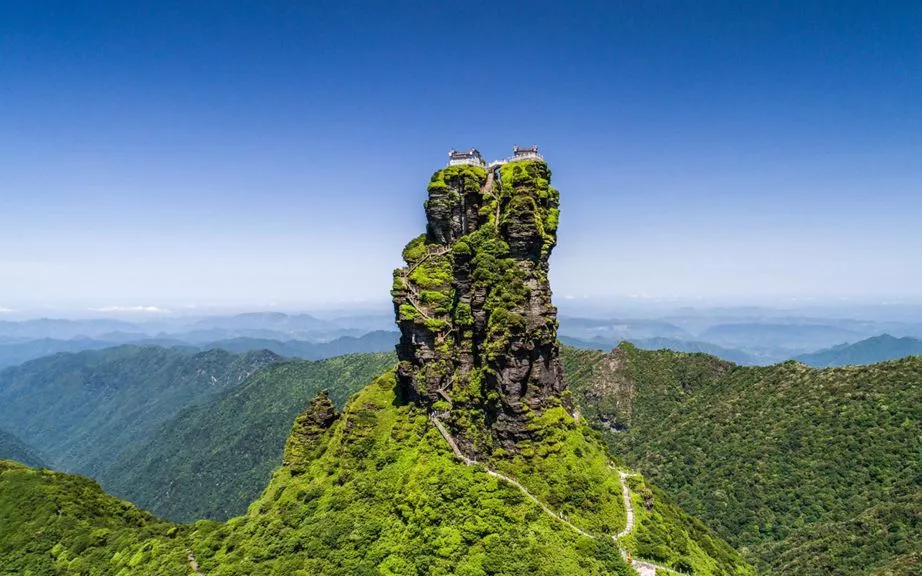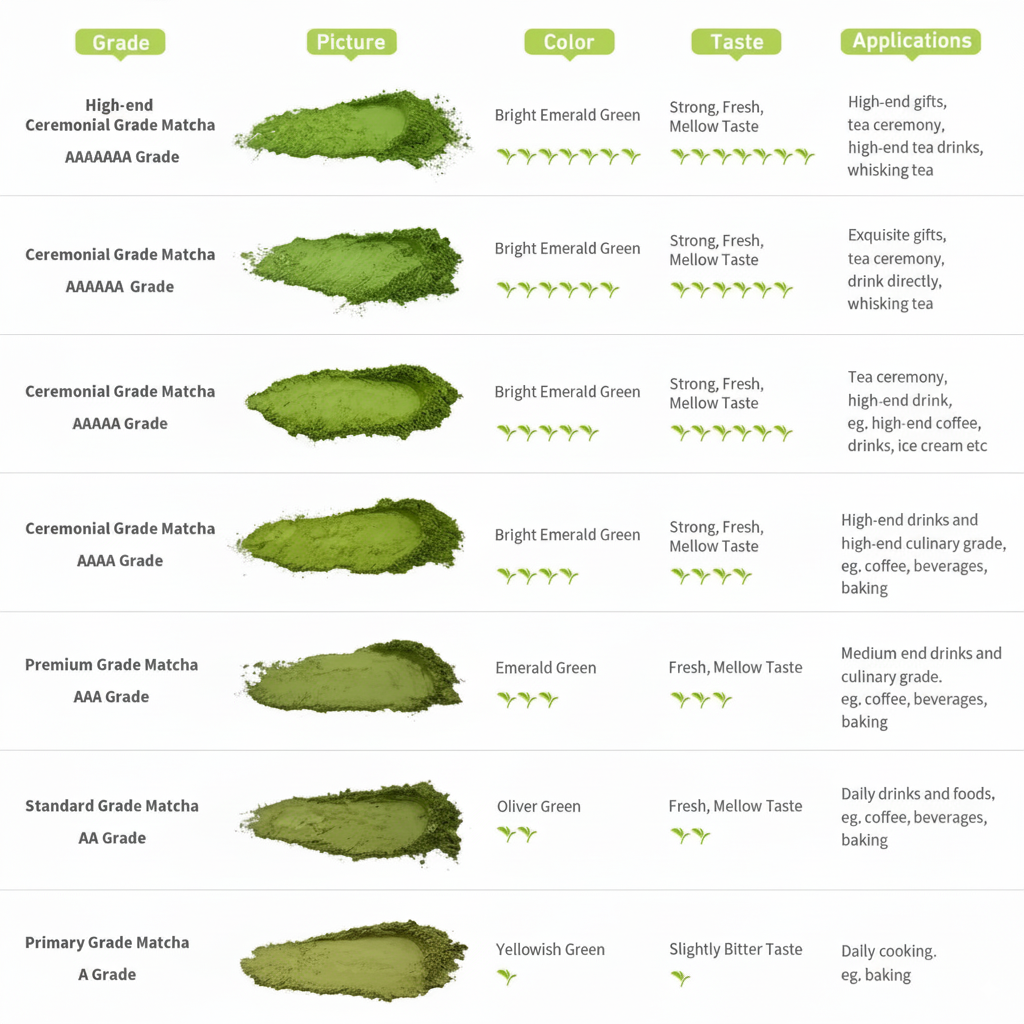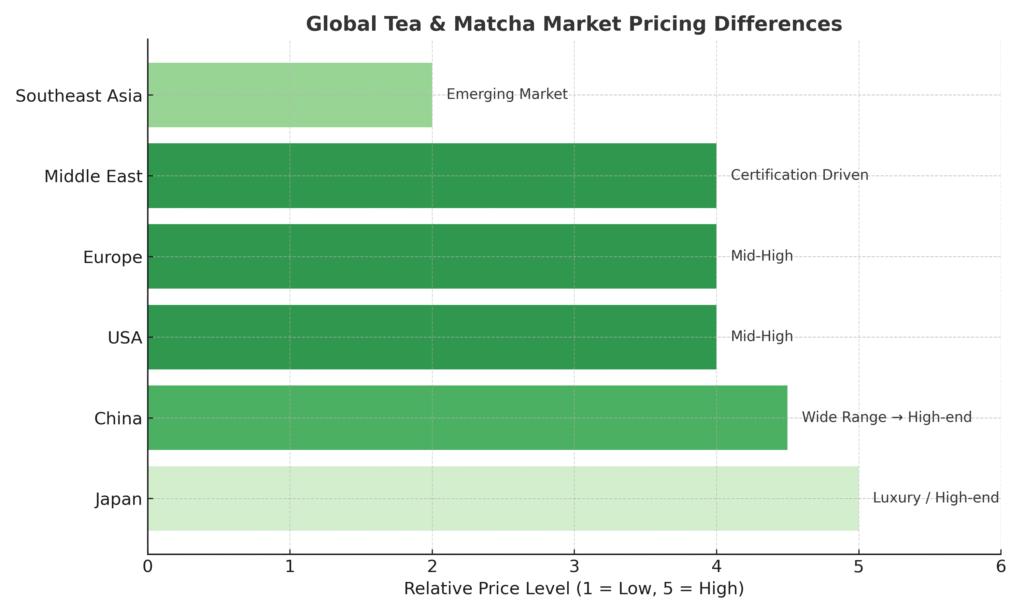Matcha is one of the most in-demand tea products worldwide, but its pricing often confuses importers, distributors, and retailers. Why does one supplier quote a much lower price while another charges several times more? What factors influence wholesale matcha pricing, and how can buyers estimate costs for bulk orders? This guide explains everything you need to know about matcha pricing—from farm production to final retail packaging.
1. Introduction: Why Matcha Prices Vary So Widely
- Matcha pricing can vary by more than 10x depending on grade and source.
- Unlike many commodities, matcha is influenced by agriculture, labor, processing, and market positioning.
- For B2B buyers, understanding the logic behind pricing helps in supplier selection and negotiation.

2. Factors That Influence Matcha Price
a) Origin & Cultivar
- Japanese matcha (Uji, Shizuoka, Nishio) is positioned at the premium end.
- Chinese matcha (Guizhou, Zhejiang) offers more competitive bulk pricing.
- Cultivars such as Yabukita, Okumidori, or Fuding Da Bai influence leaf quality and yield.
b) Processing Method
- Stone milling produces finer powder but requires more time and labor.
- Steam fixation vs pan-firing methods create differences in color and flavor.
c) Grade & Intended Use
- Culinary grade → most cost-effective, for food & beverages.
- Premium/Latte grade → mid-range pricing, balanced flavor for cafés.
- Ceremonial grade → highest-priced, requires careful shading, picking, and processing.
d) Certifications
- Organic, Halal, Kosher, HACCP, FDA registration.
- Certification adds compliance costs that influence the final price.
e) Packaging
- Bulk foil bags (lowest cost per kg) vs retail tins or stick packs (higher per-unit cost).
f) Order Size & MOQ
- Small trial orders are more expensive per unit.
- Larger contracts bring down the average cost significantly.
3. Pricing Tiers by Grade (Relative)
| Grade | Relative Cost Level | Applications |
|---|---|---|
| Culinary | Entry-level | Baking, ice cream, snacks |
| Premium / Latte | Mid-range | Lattes, café drinks |
| Ceremonial | High-end | Direct drinking, retail |
| Ultra-Ceremonial | Luxury tier | Traditional tea ceremonies |
👉 The bigger the flavor refinement and leaf care, the higher the cost.

4. Cost Breakdown: From Farm to Export
| Cost Component | Impact on Price | Notes |
|---|---|---|
| Raw Tea Leaves | Medium | Farming, shading, picking labor |
| Processing | High | Milling method, steaming, labor intensity |
| Packaging | Medium | Foil bags, tins, stick packs, labels |
| Certifications | Medium | Organic, Halal, Kosher, testing |
| Export & Logistics | Variable | Freight, duties, insurance |
| Supplier Margin | Variable | Overhead + profit |
👉 Packaging and compliance can sometimes account for half of the final price.
5. Bulk Orders vs Small Orders
📊 Order Size Impact on Relative Pricing
| Order Size | Cost Level per kg | Suitable Buyers |
|---|---|---|
| 1–5 kg | Highest | Testing, startups |
| 10–50 kg | Lower | Cafés, small retail |
| 100–500 kg | Even lower | Distributors |
| 500 kg+ | Lowest | Importers, industrial |
6. Packaging Impact on Pricing
| Packaging | Cost Impact | Suitable For |
|---|---|---|
| 1kg Foil Bag | Lowest | Bulk buyers, repacking |
| 5–10kg Bags | Lower | Medium distributors |
| 25kg Drum | Industrial | Food factories |
| 30g/50g Tin | Higher | Retail premium |
| Stick Packs | Highest | On-the-go market |
👉 The smaller and more customized the packaging, the higher the per-unit cost.
7. Regional Price Differences
- Japan: Positioned at the luxury segment.
- China: Broad price range, from cost-effective culinary to premium ceremonial.
- Europe/USA: Import costs + VAT/GST increase final landed cost.
- Middle East: Certification-driven demand (Halal), slightly higher.

8. Logistics & Shipping Impact
| Shipping Method | Cost Impact | Delivery Time |
|---|---|---|
| Courier (DHL/FedEx/UPS) | High per kg | 7–10 days |
| Air Freight | Medium | 10–15 days |
| Sea Freight | Lowest | 25–40 days |
👉 Logistics can change the final landed price dramatically, especially for smaller orders.
9. How Buyers Can Optimize Pricing
- Order in bulk – reduces per-unit cost.
- Simplify packaging – bulk bags are cheaper than tins.
- Bundle certifications – one COA can cover multiple SKUs.
- Plan logistics – consolidate shipments to reduce freight cost.
- Develop long-term supplier relationships – stable pricing and priority production.
10. Case Study: Two Buyer Profiles
- Café Chain (regular but small orders)
- Higher per-unit cost due to frequent courier shipments.
- Focused on latte-grade matcha in retail packaging.
- Distributor (large seasonal orders)
- Lower per-unit cost due to consolidated sea freight.
- Mix of culinary and ceremonial grades in bulk bags.
11. Future Pricing Trends
- Global demand rising → overall upward trend.
- Organic/sustainable certification costs → likely to increase.
- Chinese matcha scaling → stronger competition with Japanese suppliers.
- Premiumization → ceremonial grades will keep leading in price growth.
12. Conclusion
Matcha pricing is shaped by origin, grade, processing, packaging, certifications, and logistics. For importers and distributors, the key to competitive pricing lies in:
- Choosing the right grade for application
- Optimizing packaging and logistics
- Partnering with certified, reliable suppliers
👉 Contact us today to receive a customized pricing breakdown and request free samples for evaluation.
FAQ
What determines the cost difference between culinary and ceremonial matcha?
Leaf quality, shading, hand-picking, and processing methods.
Why is Japanese matcha more expensive than Chinese matcha?
Higher labor cost, traditional production, stronger brand perception.
Can bulk packaging reduce my costs?
Yes. Larger bags or drums lower per-unit cost compared to tins.
How do certifications affect pricing?
Organic, Halal, Kosher add compliance costs but expand market access.
Which shipping method is most cost-effective for large orders?
Sea freight offers the lowest per-unit cost, but takes longer.
